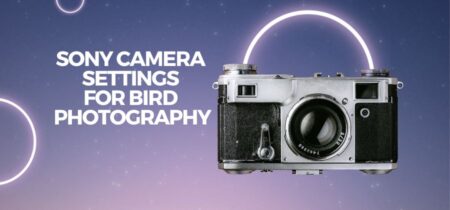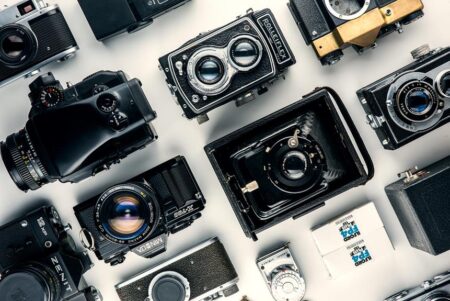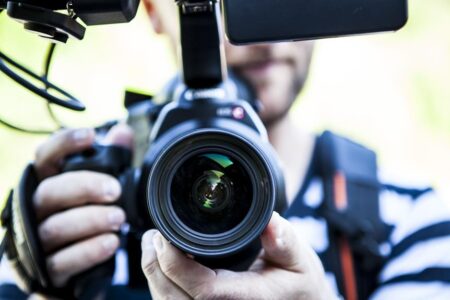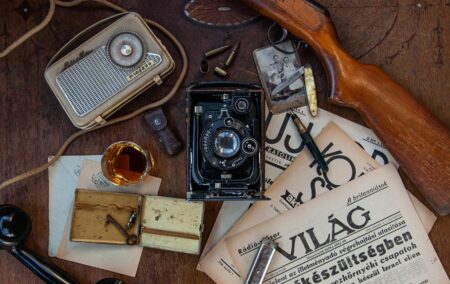
Are you in the market for a new camera?
Well, did you know that the number of times a camera’s shutter has been actuated, known as the shutter count, directly impacts its resale value?
Cameras with lower shutter counts are more desirable and retain a higher value among buyers.
However, shutter count alone may not provide a complete assessment of a camera’s condition.
In this article, we’ll delve into the significance of shutter count in evaluating a camera’s worth, usage, and video recording.
Plus, we’ll share tips for inspecting overall camera condition.
Key Takeaways
- Shutter count plays a significant role in determining the resale value of mirrorless and DSLR cameras.
- Lower shutter counts are generally preferred by buyers when purchasing used cameras.
- Shutter count alone may not provide a complete assessment of the camera’s condition, and other factors should be considered.
- Shutter count is irrelevant for video recording, as video uses the electronic shutter, not the mechanical shutter.
The Importance of Shutter Count in Determining Camera Value
When determining the value of your camera, understanding its shutter count is essential. The shutter count is a measure of how many times the camera’s shutter has been actuated. This metric is important for several reasons, including camera reliability and performance.
A lower shutter count generally indicates that the camera has been used less, making it more reliable and potentially increasing its longevity. Additionally, cameras with lower shutter counts often exhibit better performance, as they’ve experienced less wear and tear.
However, it’s important to note that shutter count alone may not provide a complete assessment of a camera’s condition. Other factors, such as overall camera condition and the presence of any wear or damage, should also be considered when determining the value of a camera.
Understanding the Relationship Between Shutter Count and Camera Usage
To understand the relationship between shutter count and camera usage, you should consider the impact of high shutter counts on a camera’s lifespan and performance.
The shutter count is a measure of how many times the camera’s shutter has been actuated. As the shutter count increases, the mechanical components of the camera may wear out faster, potentially shortening the camera’s lifespan.
Moreover, high shutter counts can affect the camera’s performance, leading to issues such as slower autofocus and reduced burst shooting speed.
It’s important to note that not all cameras are created equal, and some models are built to withstand higher shutter counts than others.
However, in general, a high shutter count can indicate extensive camera usage and may have an impact on the camera’s overall performance and longevity.
Debunking the Myth: Shutter Count and Video Recording
Don’t worry about the shutter count when it comes to video recording, as it’s irrelevant to the process. Unlike still photography, video recording doesn’t utilize the mechanical shutter of a camera. Instead, it relies on the electronic shutter, which has no moving parts and doesn’t contribute to the shutter count.
Therefore, the number of shutter actuations doesn’t have any impact on the longevity of the camera when it comes to video recording.
Shutter count is more relevant in professional videography when it comes to the resale value of the camera. However, it’s important to note that shutter count alone may not provide an accurate assessment of the camera’s condition for video recording. It’s advisable to consider other factors when evaluating a camera’s suitability for video recording.
How to Assess Camera Condition Beyond Shutter Count
If you want a comprehensive evaluation of a camera’s condition, it’s essential to consider factors beyond just the shutter count. While the shutter count is a useful indicator of usage, there are other aspects to assess.
Start by inspecting the overall physical condition of the camera, checking for any wear or damage on the sensor and body. Look for signs of moisture, dust, or scratches that may affect image quality.
Additionally, pay attention to the functionality of the camera’s buttons, dials, and autofocus system. Consider the camera’s history, including how it has been used and stored.
It’s also important to ask the seller about any repairs or maintenance that has been performed.
Comparing Mechanical and Electronic Shutter: Pros and Cons
When comparing mechanical and electronic shutters, you’ll find that each has its own advantages and disadvantages.
The mechanical shutter consists of moving curtains and provides a traditional feel. It offers a quiet operation and is less prone to rolling shutter distortion. However, it has limitations in terms of maximum shutter speed.
On the other hand, the electronic shutter has no moving parts, allowing for faster shutter speeds and silent operation. It also eliminates the risk of mechanical wear and tear. However, it may introduce rolling shutter distortion due to the sequential readout of the sensor.
When it comes to image quality, both shutters can produce excellent results, but the electronic shutter may have better sharpness due to its absence of vibrations.
Ultimately, the choice between mechanical and electronic shutter depends on your specific needs and shooting style.
Exploring the Impact of Shutter Count on Camera Resale Value
You should be aware that the shutter count of your camera can significantly impact its resale value. Here are some key points to consider about the impact of shutter count on camera resale value:
- Lower shutter counts are generally preferred when buying a used camera, as they indicate less wear and tear on the camera’s mechanical components.
- A high shutter count may signal extensive camera usage, which could potentially shorten the lifespan of the camera’s shutter mechanism.
- Strategies for reducing shutter count and maximizing camera resale value include using the camera sparingly, avoiding unnecessary shutter actuations, and considering alternative shooting modes like electronic shutter or burst shooting.
- It’s important to remember that while shutter count is an important factor in determining camera condition, it isn’t the sole indicator. Other factors like overall camera condition, sensor and body wear, and functionality should also be considered.
Unveiling the Truth: Does Shutter Count Affect Image Quality
Don’t worry about the shutter count affecting image quality.
When analyzing the relationship between shutter count and camera performance, it’s important to understand that the shutter count primarily indicates the number of times the mechanical shutter has been actuated.
The image quality, on the other hand, is determined by factors such as the sensor, lens, and image processing capabilities of the camera. While a higher shutter count may indicate more usage and potentially a shorter lifespan for the mechanical shutter, it doesn’t directly impact the quality of the images produced.
It’s essential to focus on other aspects such as sensor size, resolution, ISO performance, and lens quality when assessing the overall image quality of a camera.
Therefore, the shutter count shouldn’t be a major concern when it comes to the actual image output.
Factors to Consider When Buying or Selling a Camera: Shutter Count and Beyond
Consider both the shutter count and other factors when buying or selling a camera, as they play a crucial role in determining its worth. The shutter count alone may not provide an accurate assessment of the camera’s condition, so it’s important to assess other aspects as well.
Here are some factors to consider when assessing camera condition and the impact of shutter count on its value:
- Thoroughly inspect the camera’s condition before making a purchase or selling it. Look for wear or damage on the sensor and body.
- Check the overall camera condition, not just the shutter count. Other components like the lens, LCD screen, buttons, and dials should also be in good working condition.
- Consider purchasing cameras from trusted sellers who provide detailed information about the item’s condition.
- Remember that while the shutter count can impact the camera’s resale value, it doesn’t necessarily affect the image quality. Focus on the camera’s overall functionality and performance when making a decision.
The Role of Shutter Count in Professional Photography
Shutter count plays a significant role in determining the value and reliability of a camera for professional photographers. As a professional, you rely on your camera to capture high-quality images consistently. A high shutter count can have a negative impact on camera performance and reliability. The more times the shutter has been actuated, the more wear and tear it experiences, potentially leading to mechanical issues and a shorter lifespan. This relationship between shutter count and camera reliability is crucial to consider when investing in a professional camera. To emphasize this point, take a look at the table below, which highlights the impact of high shutter count on camera performance:
| Shutter Count | Impact on Camera Performance |
|---|---|
| Low | Minimal wear and tear |
| Medium | Some signs of use |
| High | Increased likelihood of issues |
Understanding the relationship between shutter count and camera reliability is essential for professional photographers who heavily rely on their equipment. It is important to consider the shutter count when purchasing a used camera, as a high count may indicate potential issues and reduced performance.
Expert Tips for Managing Shutter Count and Prolonging Camera Lifespan
To maximize your camera’s lifespan and minimize shutter count, follow these expert tips for effective management and maintenance:
- Shoot in burst mode sparingly: Continuous shooting can quickly increase the shutter count, so use burst mode only when necessary.
- Be mindful of exposure: Overexposing or underexposing your photos can result in unnecessary retakes, leading to a higher shutter count.
- Use electronic shutter when suitable: Electronic shutters have no moving parts and don’t contribute to the shutter count. Utilize this feature when shooting in situations where it won’t cause rolling shutter distortion.
- Regularly clean and inspect your camera: Dust and debris can affect the camera’s performance. Clean the sensor and other components regularly to maintain optimal functionality.
Frequently Asked Questions
How Does Shutter Count Affect the Camera’s Worth?
A low shutter count is important for camera depreciation because it indicates less usage and higher value. When considering camera worth, remember that a low shutter count is a key factor to consider.
Is Shutter Count a Reliable Indicator of Camera Usage?
Shutter count alone may not accurately reflect camera usage. Consider alternative ways to measure camera usage, such as checking for wear or damage on the sensor and body. Trust your instincts and make an informed decision.
Does Shutter Count Have Any Impact on Video Recording?
High shutter count doesn’t impact video quality since mechanical shutter is not used. However, a high shutter count may affect camera performance and shorten the shutter’s lifespan. Consider other factors when evaluating video recording capabilities.
What Other Factors Should Be Considered When Assessing a Camera’s Condition?
When assessing a camera’s condition, consider factors like camera age and external appearance. These aspects can give you insights into the overall wear and tear of the camera, helping you make an informed decision.
Can You Explain the Differences Between Mechanical and Electronic Shutters?
Mechanical shutters consist of moving curtains and have limitations like slower speeds and rolling shutter distortion. Electronic shutters, with no moving parts, allow faster speeds but may have limitations with image quality.
Conclusion
In conclusion, understanding the significance of shutter count is vital when evaluating the worth of a camera. By considering the number of times the shutter has been actuated, buyers can determine the camera’s usage and potential lifespan.
However, it’s important to look beyond shutter count and thoroughly inspect the camera’s overall condition.
Additionally, while shutter count doesn’t directly affect video recording, it remains a crucial factor in professional photography.
By managing shutter count and properly maintaining the camera, photographers can maximize its lifespan and value.






